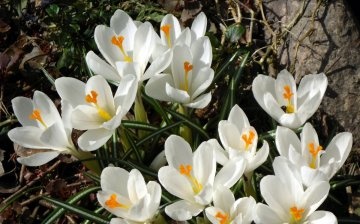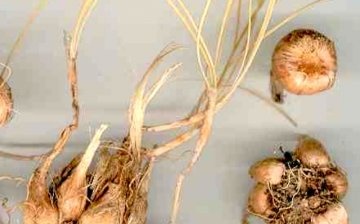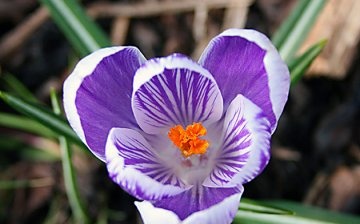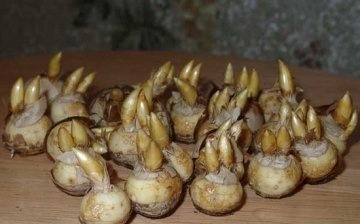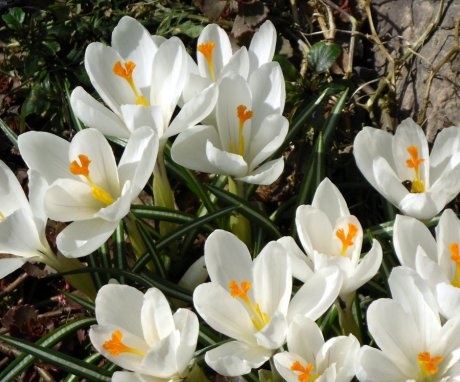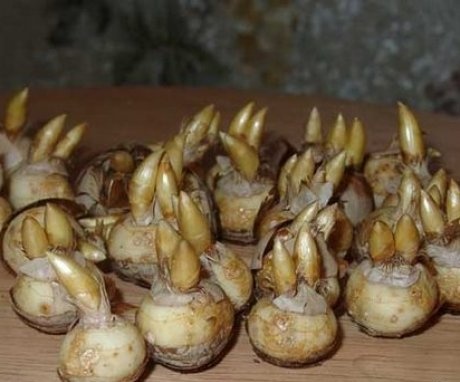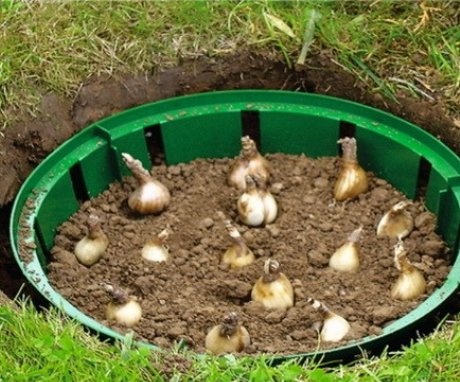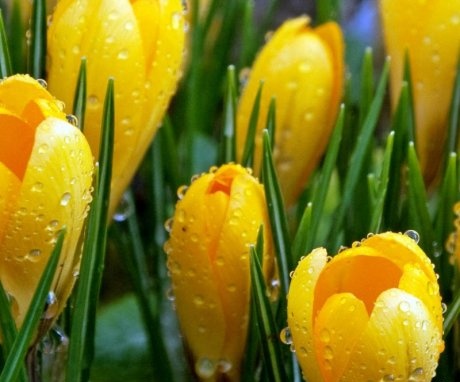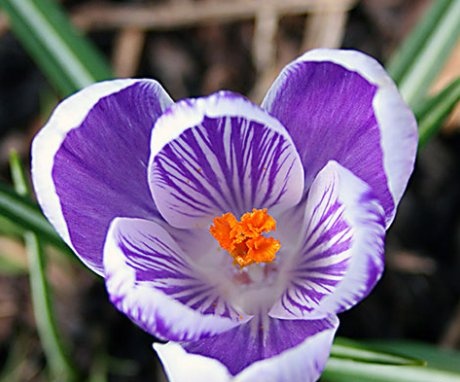Crocuses in the garden: growing and caring for flowers
Growing beautiful flowers in the garden is a kind of art that requires high skill from the gardener, attention to detail and insight into the peculiarities of the plant. A living organism is capable of developing in different conditions, but with the right approach, a particularly spectacular appearance and shape is obtained.
Content:
- Crocuses - features of flowers
- Reproduction methods
- Landing: timing and rules
- How to care for flowers
- Diseases and pests, and the fight against them
Crocuses - features of flowers
Crocuses known to all. These flowers are associated with spring and freshness. They are one of the first to bloom in early spring and bloom for about 10 days. The dormant period of the plant begins at the beginning of summer, until this time the flowers delight the eye with fresh foliage, which remains for a long time.
After the bush is undergoing a period of active development, the plant can be removed from the soil. This procedure is not necessary, because the crocus grows comfortably in one place for up to 5 years. Most gardeners prefer to remove tubers from the ground, carefully examine them and remove diseased and damaged tubers. So it is possible to make the subsequent plantings as effective as possible.
Crocus is also called saffron.
It belongs to the genus of herbaceous plants with corm systems. Iris families. Under natural conditions, crocus grows in steppe and forest conditions. It can also be found in the meadows of the Mediterranean region, Central and Southern Europe, Asia Minor and Central Asia. More than 300 species of crocuses are now known.
Reproduction methods
Crocus actively reproduces in different conditions. It is popularly spread with the help of daughter bulbs, which are separated from the mother during the transplantation process. After planting in the soil, division occurs according to certain rules, which leads to the development of the bush.
The variety determines the flowering time of the bush, which can begin in the second, third or fourth year.
Crocuses that bloom in spring can also grow from seeds. The heyday begins only in the fourth year of development. Vegetative propagation is predominant for crocuses. Autumn-flowering crocuses do not have time to ripen and blossom in our climate.
Landing: timing and rules
Today gardeners use many varieties. crocuses... They differ in flowering time and some of them may bloom in autumn. Depending on the variety of the plant, the periods of flowering, and therefore planting, also differ. If the flower blooms in the fall, then it should be planted around the middle of summer. Spring flowers are sown in September and October.
The main requirements for growing flowers:
- The main requirements for the soil for sowing are as follows: the soil must be fertile and light. It is important to remember that crocuses cannot tolerate excess moisture. Therefore, it is important to ensure uniform distribution and penetration of moisture. If the soil is clayey, then it should be diluted with sand and fertilizers (compost or manure).
- Saffron is very fond of light and it is important to have a sufficient amount of light for its harmonious development.It is recommended to plant crocuses in lighted areas that are open to light. In this case, it is possible to achieve the development of large and spectacular flowers.
- Crocuses thrive in the neighborhood tulips and daffodils, which allows you to create unique and beautiful flower beds.
- The moisture content of the soil must be maintained at a certain level. This ensures the normal development of the plant. The first sprouts that appear should be thoroughly watered. In the future, they are watered if necessary. Do not overdo it - the soil should have time to dry out between waterings.
- A high level of soil fertility contributes to the development of the plant and is an important component for achieving the required size and beauty. If the soil is fertile enough, then during the flowering period the crocus can not be fed with fertilizers during the period of flower formation.
In winter, crocuses can also be grown in an apartment. Optimally, you should choose large-flowered Dutch varieties. For planting crocus, wide pots are used, in which 5-10 tubers are placed. They are planted evenly, providing sufficient space for each plant.
The soil for planting should be neutral, sufficiently loose and permeable to air and moisture. As soon as the flowering is over, the feeding of the bush begins to be reduced, so it is possible to preserve the integrity of the tubers.
How to care for flowers
Crocus care involves a large number of different activities that lead to the achievement of the desired result. Moreover, care is important at all stages of the development of the bush, from planting to digging after the end of the growing season.
If you do not plan to transplant the plant to another place for the next season, then the tubers do not need to be transplanted. This procedure is optional, but many people use it. If a decision is made to transplant a bush, then certain rules of this process should be followed. In July, the corms are dug up and carefully sorted out. At this stage, it is important to identify diseases and damage to the tubers in order to remove them or take measures to restore them, if still possible. Planting diseased tubers is not recommended.
For storage of corms, a special place should be equipped in which the optimum temperature is maintained.
The best range would be 18-22 degrees Celsius. The room must be well ventilated. Crocuses are often grown at home on windowsills. Interestingly, properly grown crocuses are popular not only among gardeners. Crocuses are often used in cooking: saffron is widely known as a common spice that is healthy and adds interesting flavor to common dishes.
Diseases and pests, and the fight against them
Crocuses are especially attractive to gardeners due to their resistance to various diseases and pests. With proper care and adherence to the recommended rules for handling the plant, crocuses are practically not affected.
The most common diseases and pests of flowers:
- One of the most dangerous enemies for crocus is rodents - field mice love to feast on the corms of the plant. Therefore, gardeners need to be careful if they leave the crocus to dry in the field. Mice can quickly drag away tubers, so it is best not to leave them in sunlight and fresh air at all. Practical tip: Place tubers in egg racks for storage. The tubers are placed comfortably and retain their integrity.
- In some cases, crocus bulbs can be attacked by the larva of the click beetle. This can be recognized by the characteristic holes that are visible throughout the body of the bulb. To combat such insects, a special technique is used: not rotted grass is laid on top of the garden bed, which attracts larvae. After that, the grass is burned.The effectiveness of the method has been repeatedly proven in practice.
- With the wrong choice of place for growth and non-observance of the rules of sowing, the plant develops depressed. Often, when growing in unintended places, they actively develop weeds, which greatly complicates the growth of the plant.
- Rodents are carriers of diseases and viral infections of various types. When flowers appear on the flower bed, which have flattened flowers and gray spots on the petals, they should be quickly isolated, dug up and destroyed. This prevents the spread of the disease to neighboring plants.
- Gray, penicillous and sclerocial rot appear on the plant with insufficient or improper care. Fungal diseases not only complicate the development of the plant, but can lead to its death. It is important to carefully examine the planting material before planting and constantly monitor the development of the crocus.
Among the many decorative flowers, crocuses differ in the variety of colors and beauty of the inflorescences. With the right combination of shades, you can create unique garden landscapes and decorated landscapes.
More information can be found in the video:




